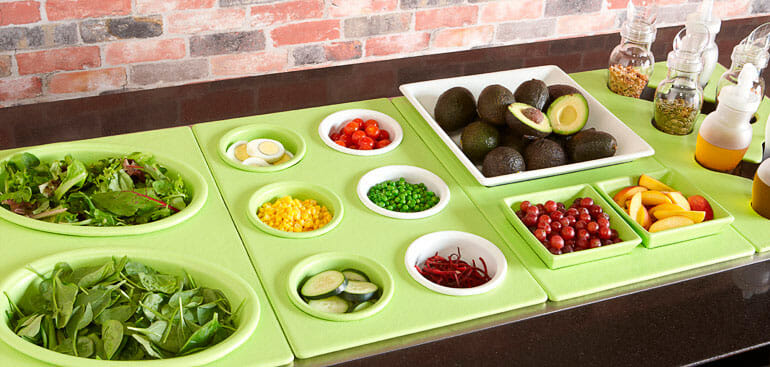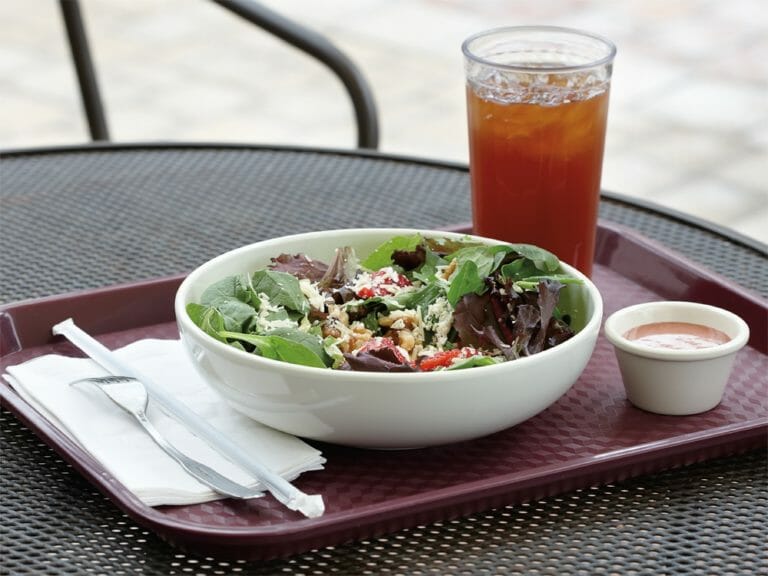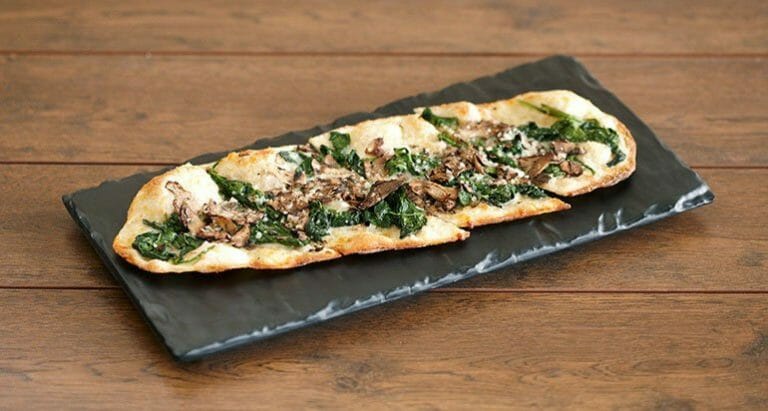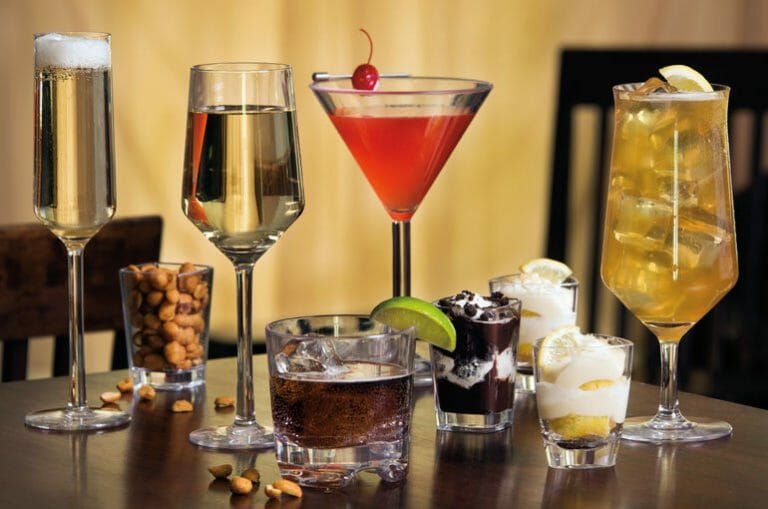Salad Bars for Commercial Foodservice: Benefits and Setup Options
We first heard the now-iconic phrase, “You don’t win friends with salad,” borne of a The Simpsons episode, nearly 22 years ago. But we’re willing to bet that a modern-day rewriting of the phrase would be just the opposite.
Today’s diners are more health-conscious than ever. The restaurant industry has responded by adding salads to their menus, in turn leading to more salad bars. Recently, Ruby Tuesday touted their salad bar, and Sizzler upgraded their look in the last few years. Restaurants aren’t the only ones incorporating salad bars. College, university, and corporate dining campuses, casinos, and hotels all embrace the healthy self-serve option.
Indeed, you do win friends with salad.
Grow Your Brand Equity with a Salad Bar
Just by adding a salad bar to your foodservice operation, you can:
- Add variety to your menu, enticing guests who may not have selected your restaurant initially
- Answer the demand for more healthy options
- Create additional customization options for your guests
- Increase check averages
- Create an engaging experience that guests can’t recreate at home or via delivery, the fastest-growing restaurant segment right now
Let’s unpack these salad bar assets, shall we?
Add Variety to Your Menu
A salad bar can exponentially add variety to your menu, in part because of the self-serve mechanism. Even with as few as 10 ingredients on a salad bar, your guests can create seemingly endless customized combinations to fit their tastes. You may list your salad bar as a single menu item, but it’s much more than that.
Despite the health trend, many restaurants offer indulgent fare because dining out is typically a special occasion where folks may make allowances to consume more calories than they normally would. However, plenty of diners still prefer to eat light, regardless of the occasion.
A salad bar can help to attract lighter eaters when otherwise your establishment may have been a hard pass. If you have a salad bar, you literally open your doors to a wider variety of guests.

Pictured: small salad bar setup using Bugambilia¨ Classic tile system and a variety of Bugambilia¨ colors.
Increase Check Averages with a Salad Bar
No small goal for any foodservice operator, increasing check averages represents a constant, front-of-mind effort. Managers achieve this with limited-time-offer items and upsell options like adding grilled shrimp, a lobster tail, or a specialty house sauce.
If your guests are already spending a good amount on their meals, some of these upsell options may seem over-the-top making them a harder sell. However, a salad is different because of its healthy positioning and the perception that it’s part of a complete meal.
If you have a beautiful salad bar, you’re in a better position to increase your check averages because:
- Guests may be more open to adding a side salad to balance out their meal than they would be to adding an extra topping, sauce, or ordering an appetizer or desserts
- If your salad bar looks great, your guests will be enticed to check it out, especially when they see other people enjoying it
- People love customized, personalized experiences, and a salad bar is just that
Salad bars aren’t just for high-end steakhouses. Even mid- and lower-tier dining establishments can increase check averages with this strategy. Let’s say the average cost of a lunch meal is between $7 and $10. Charging guests in the ballpark of $3.50-$4.50 for a side salad bar is nearly 50% of an entre. If you add that up over time, it’s a nice chunk to put on your bottom line.
Salad Bars Create an Engaging Experience for Diners
Salad bars offer a naturally engaging experience, and many guests enjoy the process of leaving their tables to create their salad masterpieces. It’s not part of an ordinary dining experience, which makes the experience something that guests either look forward to or are pleasantly surprised by upon arriving at your door.
Building a salad alongside dining companions can encourage intrigue and conversation, prompting diners to ask one another which ingredients they chose, and to show off their own delicious veggie combinations. Unusual but tasty combos made by a dining partner can even encourage someone to come back just to try it for themselves.
Further, walking through a dining room benefits both the diners and the operators. Diners essentially get to see more of the restaurant than if they stayed at their table for the entire meal. Viewing a dining room in this way can feel exploratory, which is fun for the diner.
You probably agree by now that a salad bar is a worthy investment. However, there is a catch: It needs to look inviting and clean and tantalizing. Just as much thought should go into building your salad bar setup as it does for plating your other menu items.
How to Set Up A Salad Bar: 4 Effective Options
Essentially, you have 4 options to set up your salad bar. Most operators choose an electric salad bar well, which is a piece of refrigerated restaurant equipment designed to house food pans and tiles, supported by one of the 4 options available to you:
- Ice
- Tile system
- Food pans
- New easy set-up cold bar system that uses patent-pending locking spacer bars and crocks
However, one situation where you probably wouldn’t use a refrigerated salad bar well is if your application is not permanent or you require a portable solution, perhaps for outdoor catering. In these cases, it’s still important to always keep your food cold and within the temperature safety zone.
This can be accomplished by adding ice to the bottom of an unrefrigerated (non-electric equipment) portable salad bar, typically made of metal to effectively hold in temperatures. Also, if you use Bugambilia¨ (more on this later) you are further protecting your product as the resin-coated aluminum keeps items colder longer than stainless steel.
Salad Bar On Ice
Ice can serve you well as far as designing a salad bar. It creates a clean, crisp look that can help the bright colors in the fruits and veggies you’ll display to resonate brilliantly.
Crushed, pellet, and flaked ice are the best kinds to use. They’re pliable, so they’ll hold your food pans in place well. These types of ice tend to be white because of their shape and size, which creates a slick, bright look.
Salad Bar with Tile System
Tile systems create operational efficiency and a look that guests will find enticing. The tiles are solid pieces of resin-coated aluminum, stainless steel, or plastic with shapes cut out to fit different types and sizes of food pans and crocks.

Although it’s generally a bit more expensive, resin-coated aluminum has a superior look to stainless steel. Coupled with the improved temperature conductivity over stainless, resin-coated aluminum setups used on tile systems can result in a thoughtfully-curated salad bar design that will delight your guests.

Pictured: Bugambilia¨ Classic tile system with inserts, crocks, and display bowls.
Tile system aesthetics are tidy because the food and dressing containers fit neatly in their predetermined spots while the tiles create clean space in between.
Salad Bar with Food Pans

Pictured: standard melamine gastronome-sized food pans in a drop in well system.
Salad Bar with Easy Setup Cold Bar System
Bugambilia¨ now offers the Fit Perfect⢠system, which is the easy setup cold bar system. It uses spacer and gap bars to accommodate food pans, which lock into place on the bars using a specially designed rim. Among the many benefits offered with this system is that food pans can’t slide around or fall into the cold bar when they’re moved.

Pictured: the Bugambilia¨ Fit Perfect⢠easy setup process with proprietary spacer bars.
Spacer bars run the length of the cold well and can be positioned to be as close or as far apart as you like. These are the primary bars used to lock the food pans in place. Should you end up with a little extra space, just use a gap bar to seal it off, which will keep your cold air from escaping.
The main differences between the tile and Bugambilia¨ Fit Perfect⢠systems are:
- Fit Perfect⢠is designed to be reconfigured at any point
- Tile systems create clean space between food pans and crocks, where the Fit Perfect⢠system is designed for food pans to sit flush with one another, creating a seamless look
- Minimal measuring

Pictured: detailed view of the Bugambilia¨ Fit Perfect⢠gap bar.
Like we mentioned with tiles, you have to keep a few extras on-hand to have flexibility in your salad bar setup. But with the Bugambilia¨ Fit Perfect⢠system, it’s ready to be reconfigured whenever you like. Tiles also require a decent amount of measuring, even if you’re working with standard sizes, due to the small variations in cold bar sizes. But part of what makes Bugambilia¨ Fit Perfect⢠so easy to use is that it only requires minimal measurement.
The flush design of these pans and spacer bars create an elegant and modern look. Fit Perfect⢠is stocked in the Mod finish, which is sleek and smooth. Overall, the minimalist design leans on the clean lines of the food pan edges, making your fresh fruits and veggies stand out. After all, that’s what your guests are after, so you definitely want to let your ingredients shine.
Now that you’re essentially an expert in salad bars, get out there and make friends with salad! If you’d like to read more in-depth about the Bugambilia¨ Fit Perfect⢠system, we wrote a review just for you: “Review of Bugambilia¨ Fit Perfectâ¢: The Easy Setup Cold Bar Solution for Foodservice.”
{{cta(‘a2fed10f-01e8-4e9c-a9aa-47abcb6aff1a’)}}











